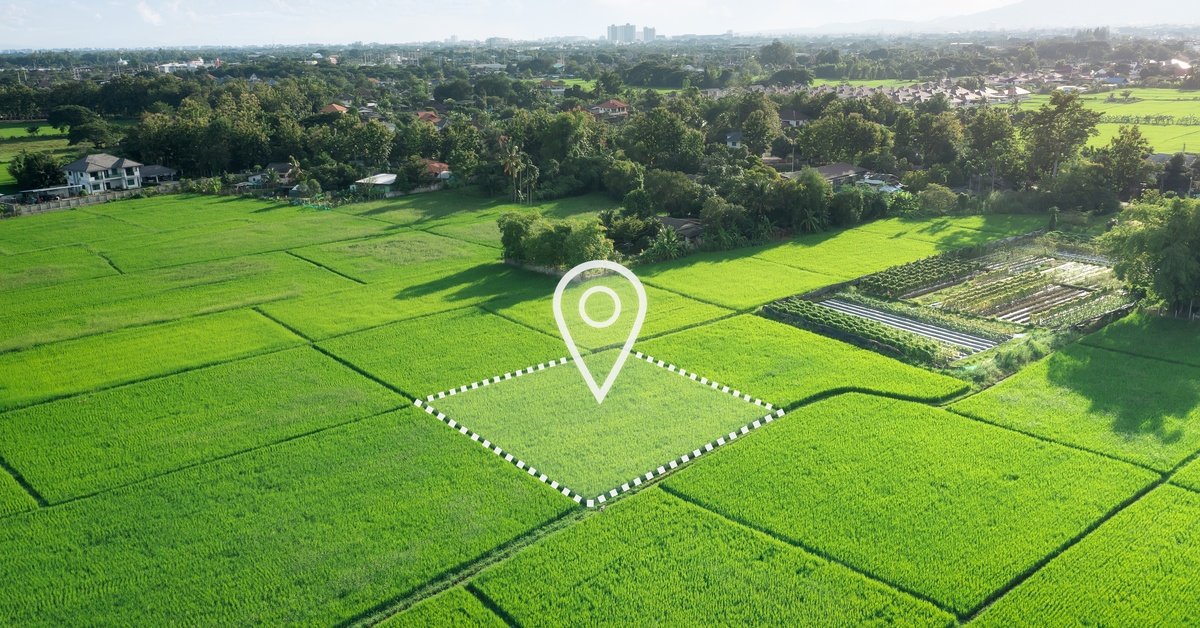A Beginner’s Guide to Investing in Farmland
August 18, 2025 1:20 pm PST

Investing in farmland is an increasingly popular way to diversify financial portfolios and secure a stable source of income. Farmland offers several compelling benefits, including steady returns, asset appreciation, and a tangible connection to one of the world’s most essential and rewarding industries, agriculture.
Global food demand continues to rise dramatically, driven by population growth and changing consumption patterns. Farmland investments are typically less volatile than traditional equities, making them an attractive choice for cautious or experienced investors.
This beginner’s guide to investing in farmland will help you understand the intricacies, from the initial steps to important factors to consider along the way. Whether you’re looking for a long-term investment or a stable asset to combat inflation, you can rely on farmland as a potential source of growth and profitability.
Understanding the Basics
Farmland investing involves purchasing land used for agricultural activities, such as crop farming or livestock grazing. This type of investment allows individuals to earn income from leasing the land or selling harvested goods. Unlike other real estate investments, farmland comes with unique factors, including soil quality, climate, and market proximity.
You must familiarize yourself with agricultural fundamentals to make informed decisions. Understanding crop cycles, market pricing, and the influence of international trade impacts financial outcomes. Researching these aspects ensures more confidence in securing a sustainable and profitable investment strategy.
Benefits of Farmland as an Investment
Farmland has a multitude of benefits as an investment, making it an attractive option.
Here are some of the key advantages:
- Consistent income potential: Leasing farmland to tenants generates steady income through rental agreements, allowing you to benefit financially without needing to engage in day-to-day farming activities.
- Resilience in demand: The essential nature of agriculture means that farmland remains a required asset, regardless of economic cycles or market fluctuations.
- Inflation hedge: Historically, farmland can outpace inflation, preserving wealth and offering a reliable financial refuge during times of economic uncertainty.
- Steady appreciation: Farmland values appreciate over time, providing long-term capital growth while maintaining a relatively low level of risk compared to other investment options.
- Diversification benefits: Adding farmland to an investment portfolio introduces a tangible, non-correlated asset that can reduce overall portfolio volatility and provide stability.
- Sustainability focus: With increasing awareness of sustainable practices, farmland offers opportunities for environmental protection while qualifying for tax benefits or incentives.
Financial Planning and Budgeting
Before purchasing farmland, create a financial plan that includes all expected costs. Farmland investments often require upfront capital for land acquisition, property taxes, and potential maintenance fees. Proper budgeting will help you determine the financial viability for new investments without major drawbacks. Securing financing through bank loans or private lenders may be necessary for some investors. Lenders often require detailed financial projections, including anticipated returns and repayment plans.
Factors To Consider When Selecting Farmland

Evaluate soil fertility and water resources carefully, as fertile soil produces higher agricultural yields, leading to enhanced potential rental income and overall higher profitability. Access to consistent water sources is essential for crop and livestock sustainability.
Location is another critical factor that can impact the value and demand for farmland. If you’re looking for the best land for sale in America for farming purposes, choose areas that support diverse crop production and strong infrastructure. These factors define higher returns on investment and long-term value appreciation.
Types of Farmland Investments
You can invest in farmland in several ways, with each offering varying levels of involvement, control, and risk. Here’s a list:
- Direct ownership: Investing directly in farmland allows you to purchase land outright to manage farming operations or lease the land to professional farming operators. This approach provides the advantage of full control over the asset, including decisions related to crop production or land use.
- Farmland funds: Farmland investment funds pool capital from multiple investors to purchase and manage farmland assets. These funds can diversify investments across multiple farms, reducing individual risk while offering passive returns to investors.
- Farmland Real Estate Investment Trusts (REITs): REITs offer a way to invest in farmland through publicly traded shares. These funds spread investments across numerous properties, providing the benefits of farmland ownership without requiring direct management.
Risks Associated With Farmland Investing
Farmland investments, while stable, also have inherent risks, including variable weather conditions. Droughts, floods, and other environmental factors can greatly impact crop yields, affecting expected returns. Evaluating weather patterns and climate resilience is important before purchasing farmland.
Farmland markets can experience fluctuations based on changes in agricultural policy or trade agreements. You should remain aware of international trade developments affecting commodity prices and the demand for specific farm goods.
Technology in Modern Farming
Technology, ranging from precision farming to automated machinery, keeps redefining agriculture. Technological advancements enable farmers to optimize productivity for higher yields and reduced operational costs.
Data analytics and monitoring systems provide valuable insights into land performance. These tools allow you to make data-driven decisions and adapt land usage to maximize returns effectively. Embracing these changes secures long-term sustainability and profitability.
Conducting Due Diligence

Performing due diligence is an essential step before investing in farmland. This process involves reviewing land records, assessing legal claims, and verifying zoning regulations. These steps minimize risks and mitigate potential future disputes concerning property usage.
Engaging with reputable brokers and legal advisors is key for a smooth purchasing process. Experts with experience in agricultural real estate provide insights into market trends and negotiation strategies to obtain the best deals. Such expertise helps you avoid pitfalls in an intricate market.
Tax Benefits and Incentives
Farmland owners may benefit from specific tax advantages that incentivize agricultural investments. These include exemptions or reductions in property taxes, enhancing overall profitability. Researching local tax codes will help you identify available benefits.
Governments may also grant subsidies or cost-sharing programs aimed at promoting sustainable farming practices. These financial incentives alleviate certain operational burdens while encouraging environmentally friendly farming.
Building a Long-Term Strategy
Building a long-term strategy for farmland investing requires an approach that aligns with clearly defined objectives, such as generating passive income, achieving capital appreciation, or a mix of both. Conduct a thorough market analysis to identify key trends and understand regional demands for informed decision-making.
Establishing planned timelines for returns helps you set realistic expectations and provides a structured pathway to achieve financial goals. Proactive planning for potential risks, such as fluctuating market conditions, environmental challenges, or regulatory changes, safeguards investments and maintains stability.
Investing in farmland offers a dynamic blend of financial security, diversification, and long-term growth potential. It provides you with a tangible asset that’s resilient to economic fluctuations while contributing to the essential global demand for food production.
Approaching a farmland investment with a well-researched strategy, understanding the market dynamics, and remaining prepared for potential risks will help you harness the unique benefits of this asset. For those willing to put in the effort to learn and adapt, this investment can yield major rewards, making farmland a valuable addition to any diversified portfolio.


